- 18
- 91
- 101
- 193
Video info and credits
The specimens seen in this video are all apart of the Naguib Pasha Mahfouz collection which are housed at the Naguib Pasha Mahfouz museum in Egypt. These are the first specimens in this collection to be digitally photographed and uploaded to the internet as part of what is going to be the museum's digital platform & venue once finished.
Music
The title and artist of the song in the beginning is unknown to me.
Lair by Lucas King
https://youtube.com/@LucasKingPiano
Demons call by BatchBug
sound mixed and edited by Rainonthescarecrow
Embryonic and Fetus Anatomical Fluid-Preserved Specimens
Other terms used:
Wet Specimens
Fetal Specimens
Miscarriage Specimens
Stillborn Specimens
Pickled Punks (Carney and sideshow term)
Purpose:
Medical study, and research
Public education
Carnival/Sideshow/Freakshow Exhibits
Legacy:
Embryonic and Fetus Specimens were instrumental to our understanding of early life development, pregnancy, and child birth.
Were vital to the development of the medical fields of Obstetrics and Gynaecology.
The knowledge gained from studying these specimens has led to treatments, procedures, and extremely important insights that have saved countless lives.
About Naguib Pasha Mahfouz
Professor Mahfouz is looked upon as the father of Obstetrics and Gynaecology in Egypt. He was the first professor of the speciality in Egypt and the Middle East. He established the first midwifery school in Egypt. His book on obstetrics “The Art of Midwifery and Obstetrics” remains a classic until this day. He established the first clinic for the neonates in Cairo in 1927 and the government adopted the scheme nationwide after the success of the first clinic.
Naguib Mahfouz qualified in 1902. He volunteered to work in a town in Asyiut, where an epidemic of cholera had just broken out. He traced the source of infection to a polluted water well that supplied most of the town with water. After condemning the well, the epidemic came to an end. He set his heart on specialising in obstetrics and gynaecology. He had his personal reasons because his own delivery was a complex one as his mother was in obstructed labour for three days. He was recommended by the British General Health Manager of Egypt to join Qasr el Eini Medical School where he was appointed assistant surgeon. He then established the first outpatient gynaecological clinic in Egypt. It proved to be very popular. The medical school appointed him as the first professor of obstetrics and gynaecology in the country.
He pioneered surgery of gynaecologic fistulae, his work on fistulae remains a standard operative technique until this day. A copy of his book, “Mahfouz Atlas Of Gynaecology and Obstetrics” is kept in the library of The Royal of Obstetricians and Gynaecologists in London.
He established the first pathology museum in gynaecology which was highly commended by the President of the Royal College of Obstetricians and Gynaecologists of the day.
The Nobel prize winner Nagib Mahfouz the writer was named after Professor Mahfouz.
A freezing day on 5 January 1882. “I was born in a state of white asphyxia, the worst form of foetal distress. I was breathless when I was born and did not meet life with screams as most babies do. The midwife and doctor who attended my mother took me for dead. I was placed, together with the placenta, in a copper tray near an open window. My family was told that I was stillborn. Half an hour later my aunt Hana whispered to the midwife that she noticed that the baby was breathing feebly every few minutes whereupon the midwife wrapped me up, cut the cord, and did what she could to resuscitate me.”
From such a precarious start to life, Naguib Mahfouz went on to become the first Egyptian professor of obstetrics and gynaecology at Kasr-El-Aini Hospital, a post he occupied until he retired in 1947. Among his many achievements, his research into surgical techniques of fistula repair made him world famous. He was a prolific author on a wide variety of subjects including urinary and faecal fistulas, fibroids, ectopic pregnancy, ovarian tumours, pelvic infections, and endometriosis.
The Mahfouz museum at Kasr-El-Aini Hospital, which he founded at his own expense, contains a unique collection of obstetric and gynaecological specimens. His magnum opus, the Atlas of Mahfouz's Obstetrics and Gynaecological Museum (John Sherratt, 1949), was described by the then president of the Royal College of Obstetricians and Gynaecologists, Sir Eardley Holland, as “no doubt the best book that has appeared in obstetrics and gynaecology.” Mahfouz became a fellow of the Royal College of Physicians and an honorary fellow of the Royal College of Obstetricians and Gynaecologists, the Royal College of Surgeons of England, and the Royal Society of Medicine.
In his autobiography (The Life of an Egyptian Doctor, Livingstone, 1966) Mahfouz tells why he specialised in obstetrics and gynaecology: “One day . . . Dr Shoukry . . . asked me to help him in a difficult case of labour. I went with him to his clinic and there found on the operating table a lady whom they had tried, unsuccessfully, to deliver with forceps without anaesthesia. For two hours Dr Shoukry tried, unsuccessfully, to deliver the head with forceps but it would not come down. He then asked me to change places with him and try to do a podalic version and bring down a foot as my hand and arm were thinner than his. I declined saying that I had no experience whatsoever in deliveries. Dr Shoukry tried to pull down a foot and it took him a whole hour before he succeeded. He and his assistant were able to deliver the body of the foetus up to the shoulders only but the head would not come down. They went on pulling the shoulders until the body of the foetus was severed from the head. I suggested taking the patient to the Government hospital or else calling an obstetric surgeon into consultation. They replied that among all the Egyptian and foreign doctors in Alexandria there was not one who was an Obstetrician. In the morning . . . I was told that she (the patient) had died during the night with the baby's head still in her uterus. . . . It was then that I resolved to do everything in my power to study obstetrics and gynaecology and to dedicate my life to help women suffering from difficult labour.”
Naguib Mahfouz was initially assigned to the Cairo railway station to examine suspected cholera patients coming from Upper Egypt. Not a man who would shy away from the call of duty, Mahfouz paid a visit to the Health Department Director General and demanded to be sent to Mousha, a village in Upper Egypt near Assiut which was particularly hard-hit by the deadly disease and where a doctor had just succumbed to the same disease he had been sent to fight. A bewildered Director General could only agree to his request. In Mousha, Young Mahfouz traced the cholera deaths to an infected well in a farmer's house. Within a week of the discovery of the well, the Mousha cholera epidemic had come to an end. It is ironic that a nineteen-year-old medical student succeeded where a body of the ablest and most experienced British Public Health Department experts had failed. Mahfouz subsequently had similar success in fighting cholera in each of Deirout in Upper Egypt and Alexandria.
Naguib Mahfouz qualified as a doctor in December 1902 coming top of his year. In 1904 and after a two-year spell at Suez hospital, he was appointed as an anaesthetist at Kasr El Aini hospital. As there was no such thing as a department of obstetrics or gynaecology at Kasr El Aini hospital, Mahfouz started a weekly gynaecological outpatient clinic. This turned out to be such a success that two whole wards were soon dedicated to obstetrical and gynaecological patients. This is how the first department of obstetrics and gynaecology in Egypt came into existence. Much of the experience that Mahfouz acquired in dealing with difficult labour came from an agreement that he had struck with the medical officers who delivered women at home. Whenever these were faced with a difficult labour, they would call him into attendance. For his part, he would attend to the patient's house and help them deal with the most complicated cases at no fee whatsoever for himself. During the subsequent fifteen years, Mahfouz attended about two thousand women with difficult labour in their own homes. During this time, he recalls sleeping no more than two nights a week in the comfort of his own home. One of the children that Naguib Mahfouz delivered, after a difficult labour, was named after him in 1911. This child later became the Laureate of the Nobel prize in literature, the famous novelist Naguib Mahfouz.
Naguib Mahfouz was appointed as Professor of Obstetrics and Gynaecology at Kasr El Aini Medical School in January 1929, a post he occupied until he reached the age of retirement in January 1942. His term of service at Kasr El Aini was extended by five years at the unanimous request of his colleagues at the department of Obstetrics and Gynaecology. Mahfouz was also obstetrician and gynaecologist to the Egyptian Royal Family. His pioneering work on the surgical repair of urinary and faecal fistulae brought him and Kasr El Aini hospital international acclaim. Such was his reputation that the leading lights in his speciality came all the way to Egypt to watch him repair fistulae at Kasr El Aini and the Coptic Hospitals. Such was his fame and international acclaim that he was invited to lecture and show films of his operations at the Universities of London, Oxford, Edinburgh, Geneva and Lausanne, to name a few.
A great handicap to Naguib Mahfouz's work was the absence of a maternity unit at Kasr El Aini hospital. Thanks to his efforts and unrelenting campaigning, the first maternity centre in Egypt came into existence at Kasr El Aini. Mahfouz reorganised the School of Nursing and Midwifery and taught general nursing and midwifery to its pupils for over thirty years. No less than one thousand midwives graduated under him. His two books on nursing and midwifery were used by the students for many years. In 1919, he started a pioneering scheme whereby midwives, trained to the highest standards by himself, were allowed to deliver women in their own homes. It is interesting to note that a similar scheme was only started a year later in England. In 1919, Mahfouz introduced, for the first time in Egypt, antenatal clinics at the Kasr El Aini maternity hospital as well as in the centres that he had opened in Cairo's deprived areas. Following this, he established a child welfare section at Kasr El Aini hospital, the first of its kind in Egypt. Many mother and child welfare centres were then built throughout the country.
The Collection
By 1930, Naguib Mahfouz had managed to collect three thousand of the rarest specimens in obstetrics and gynaecology obtained from his operations. That same year, he offered the museum which housed them and which was named after him, as a gift to the Kasr El Aini Medical School. The Naguib Mahfouz Museum of Obstetrics and Gynaecology still exists to date at Kasr El Aini Medical School. In 1945, the museum was described by the then President of the Royal College of Obstetricians and Gynaecologists of England, Sir Eardley Holland, as “a remarkable collection” and ” a wonderful monument to the name of its founder”. Mahfouz provided specimens to the museums of each of the universities of Ein Shams, Alexandria, Assiut and Khartoum.
sources:
https://en.wikipedia.org/wiki/Naguib_Pasha_Mahfouz
https://copticmedical.com/dr-nagib-mahfouz/
https://www.nourelrefai.com/gallery/Naguib-Pacha-Mahfouz-Museum/
https://pubmed.ncbi.nlm.nih.gov/35099840/
Bonus
There is a HIDDEN Marsey somewhere in the video, the first user to posts a screen shot of the hidden Marsey in the comments will win 1,000 Mbux..
If the winner is also a member of
!Memento_mori or a follower I'll double the prize and give them 2,000.
if the winner is a member and a follower I'll give them 3,000 Mbux!
Note: the marsey at the end of the video is NOT the hidden Marsey
- 15
- 38
A truck driver identified as Gerardo Morales suffered a fatal heart attack while waiting for food at a restaurant in Los Mangos, Comayagua, Honduras.
- 109
- 304
Video Description:
a slide show of crime scene photos of the murders of Nicole brown simpson and Ron Goldman with details about each photo, case info and O.J. Simpson describing what happen and how he killed them -
Disturbing interview with O.J. Simpson
This is a really weird interview where Simpson is being interviewed as if its a "hypothetical situation"
Case overview
Nicole Brown Simpson, and her friend Ron Goldman are brutally stabbed to death outside Nicole's home in Brentwood, California, in what quickly becomes one of the most highly publicized trials of the century. With overwhelming evidence against him, including a prior record of domestic violence towards Brown, O.J. Simpson became the chief suspect.
Although he had agreed to turn himself in, Simpson escaped with friend A.C. Cowlings in his white Ford Bronco on June 17. He was carrying his passport, a disguise, and $8,750 in cash. Simpson's car was spotted that afternoon, but he refused to surrender immediately. Threatening to kill himself, he led police in a low-speed chase through the freeways of Los Angeles as the entire nation watched on television. Eventually, Simpson gave himself up at his home in Brentwood.
The evidence against Simpson was extensive: His blood was found at the murder scene; blood, hair, and fibers from Brown and Goldman were found in Simpson's car and at his home; one of his gloves was also found in Brown's home, the other outside his own house; and bloody shoeprints found at the scene matched those of shoes owned by Simpson.
However, Simpson's so-called “Dream Team” of defense lawyers, including Robert Shapiro, Johnnie Cochran, F. Lee Bailey, and Robert Kardashian claimed before a national television audience that Simpson had been framed by racist police officers such as Detective Mark Fuhrman. After deliberating for three hours, the jury acquitted Simpson. He vowed to find the “real killers,” but has yet to turn up any new leads.
In a civil trial brought about by the families of the victims, Simpson was found responsible for causing Goldman's death and committing battery against Brown in February 1997, and was ordered to pay a total of $33.5 million, little of which he has paid.
In 2007, Simpson ran into legal problems once again when he was arrested for breaking into a Las Vegas hotel room and taking sports memorabilia, which he claimed had been stolen from him, at gunpoint. On October 3, 2008, he was found guilty of 12 charges related to the incident, including armed robbery and kidnapping, and sentenced to 33 years in prison. He was released on October 1, 2017.
O.J. Simpson left a suicide letter at the home of his friend Robert Kardashian before he fled in the white Bronco.
on a side note: Robert Kardashian read the letter he found on live t.v. this was the start of the Kardashian family fame..
so we can also blame O.J. for that.
O.J.'s "Suicide Letter"
[Letter discovered on June 17, 1994, shortly before Simpson's televised Bronco ride and arrest.]
To whom it may concern: First, everyone understand I have nothing to do with Nicole's murder. I loved her, always have and always will. If we had a problem, it's because I loved her so much.
Recently, we came to the understanding that for now we were not right for each other, at least for now. Despite our love we were different, and that's why we mutually agreed to go our separate ways. It was tough splitting for a second time, but we both knew it was for the best.
Inside I had no doubt that in the future, we would be close as friends or more. Unlike what has been written in the press, Nicole and I had a great relationship for most of our lives together, Like all long-term relationships, we had a few downs and ups. I took the heat New Year's 1989 because that's what I was supposed to do. I did not plead no contest for any other reason but to protect our privacy and was advised it would end the press hype.
I don't want to belabor knocking the press, but I can't believe what is being said. Most of it is totally made up. I know you have a job to do, but as a last wish, please, please, please, leave my children in peace. Their lives will be tough enough.
I want to send my love and thanks to all my friends. I'm sorry I can't name every one of you, especially A.C. man, thanks for being in my life. The support and friendship I received from so many: Wayne Hughes, Lewis Markes, Frank Olson, Mark Packer, Bender, Bobby Kardashian.
I wish we had spent more time together in recent years. My golfing buddies, Hoss, Alan Austin, Mike, Craig, Bender, Wyler, Sandy, Jay, Donnie, thanks for the fun. All my teammates over the years, Reggie, you were the soul of my pro career. Ahmad, I never stopped being proud of you. Marcus, You've got a great lady in Catherine, don't mess it up. Bobby Chandler, thanks for always being there. Skip and Kathy, I love you guys, without you I never would have made it through this far. Marguerite, thanks for the early years. We had some fun. Paula, what can I say? You are special. I'm sorry we're not going to have our chance. God brought you to me I now see. As I leave, you'll be in my thoughts.
I think of my life and feel I've done most of the right things. What the outcome, people will look and point. I can't take that. I can't subject my children to that. This way they can move on and go on with their lives. Please, if I've done anything worthwhile in my life. Let my kids live in peace from you (press).
I've had a good life. I'm proud of how I lived. My mama taught me to do unto other. I treated people the way I wanted to be treated. I've always tried to be up and helpful so why is this happening? I'm sorry for the Goldman family. I know how much it hurts.
Nicole and I had a good life together. All this press talk about a rocky relationship was no more than what every long-term relationship experiences. All her friends will confirm that I have been totally loving and understanding of what she's been going through. At times I have felt like a battered husband or boyfriend but I loved her, make that clear to everyone. And I would take whatever it took to make it work.
Don't feel sorry for me. I've had a great life, great friends. Please think of the real O.J. and not this lost person.
Thanks for making my life special. I hope I helped yours.
Peace and love, O.J. [smiley face inside the O]
Letter written by Nicole Brown Simpson to O.J.
O.J. --
I think I have to put this all in a letter. Alot of years ago I used to do much better in a letter, I'm gonna try it again now.
I'd like you to keep this letter if we split, so that you'll always know why we split. I'd also like you to keep it if we stay together, as a reminder.
Right now I am so angry! If I didn't know that the courts would take Sydney & Justin away from me if I did this I would (expletive) every guy including some that you know just to let you know how it feels.
I wish someone could explain all this to me. I see our marriage as a huge mistake & you don't.
I knew what went on in our relationship before we got married. I knew after 6 years that all the things I thought were going on -- were! All the things I gave in to -- all the "I'm sorry for thinking that" "I'm sorry for not believing you" -- "I'm sorry for not trusting you."
I made up with you all the time & even took the blame many times for your cheating. I know this took place because we fought about it alot & even discussed it before we got married with my family & a minister.
OK before the marriage I lived with it & dealt with (illegible) mainly because you finally said that we weren't married at the time.
I assumed that your recurring nasty attitude & mean streak was to cover up your cheating & a general disrespect for women & a lack of manners!
I remember a long time ago a girlfriend of yours wrote you a letter -- she said well you aren't married yet so let's get together. Even she had the same idea of marriage as me. She believed that when you marry you wouldn't be going out anymore -- adultery is a very important thing to many people.
It's one of the 1st 10 things I learned at Sunday school. You said it (illegible) some things you learn at school stick! And the 10 Comandments did!
I wanted to be a wonderful wife!
I believed you that it would finally be "you & me against the world" -- that people would be envious or in awe of us because we stuck through it & finally became one a real couple.
I let my guard down -- I thought it was finally gonna be you & me -- you wanted a baby (so you said) & I wanted a baby -- then with each pound you were terrible. You gave me dirty looks looks of disgust -- said mean things to me at times about my appearance walked out on me & lied to me.
I remember one day my mom said "he actually thinks you can have a baby & not get fat."
I gained 10 to 15 lbs more that I should have with Sydney. Well that's by the book -- Most women gain twice that. It's not like it was that much -- but you made me feel so ugly! I've battled 10 lbs up & down the scale since I was 15 -- It was no more X-tra weight than was normal for me to be up -- I believe my mom -- you thought a baby weighs 7 lbs & the woman should gain 7 lbs. I'd like to finally tell you that that's not the way it is -- And had you read those books I got you on pregnancy you may have known that.
Talk about feeling alone ....
In between Sydney & justin you say my clothes bothered you -- that my shoes were on the floor that I bugged you -- Wow that's so terrible! Try I had a low self esteem because since we got married I felt like the paragraph above.
There was also that time before Justin & after few months Sydney, I felt really good about how I got back into shape and we made out. You beat the holy hell out of me & we lied at the X-ray lab & said I fell off a bike ... Remember!??
Great for my self esteem.
There are a number of other instances that I could talk about that made my marriage so wonderful ... like the televised Clipper game & going to (illegible) before the game & your 40th birthday party & the week leading up to it. But I don't like talking about the past It depressed me.
Then came the pregnancy with Justin & oh how wonderful you treated me again -- I remember swearing to God & myself that under no circumstances would I let you be in that delivery room.
I hated you so much.
And since Justin birth & the mad New Years Eve beat up.
I just don't see how our stories compare -- I was so bad because I wore sweats & left shoes around & didn't keep a perfect house or comb my hair the way you liked it -- or had dinner ready at the precise moment you walked through the door or that I just plain got on your nerves sometimes.
I just don't see how that compares to infidelity, wife beating verbal abuse --
I just don't think everybody goes through this --
And if I wanted to hurt you or had it in me to be anything like the person you are -- I would have done so after the (illegible) incident. But I didn't even do it then. I called the cops to save my life whether you believe it or not. But I didn't pursue anything after that -- I didn't prosecute, I didn't call the press & I didn't make a big charade out of it. I waited for it to die down and asked for it to. But I've never loved you since or been the same.
It made me take a look at my life with you -- my wonderful life with the superstar that wonderful man, O.J. Simpson the father of my kids -- that husband of that terribly insecure (illegible) -- the girl with no self esteem (illegible) of worth -- she must be (illegible) those things to with a guy like that.
It certainly doesn't take a strong person to be with a guy like that and certainly no one would be envious of that life.
I agree after we married things changed -- we couldn't have house fulls of people like I used to have over & barbque for, because I had other responsabilities. I didn't want to go to alot of events & I'd back down at the last minute on fuctions & trips I admit I'm sorry --
I just believe that a relationship is based on trust -- and the last time I trusted you was at our wedding ceremony. it's just so hard for me to trust you again. Even though you say you're a different guy. That O.J. Simpson guy brought me alot of pain heatache -- I tried so hard with him -- I wanted so to be a good wife. But he never gave me a chance.
Audio O.J. Simpson's full Interrogation
Transcript of O.J. Simpson's interrogation by LAPD
This interrogation was conducted by Philip Vannatter and Thomas Lange, the Los Angeles Police Department's chief investigators of the murders of Nicole Simpson and Ron Goldman.
Vannatter: ...my partner, Detective Lange, and we're in an interview room in Parker Center. The date is June 13th, 1994, and the time is 13:35 hours. And we're here with O.J. Simpson. Is that Orenthal James Simpson?
Simpson: Orenthal James Simpson
Vannatter: And what is your birthdate, Mr. Simpson?
Simpson: July 9th, 1947.
Vannatter: OK. Prior to us talking to you, as we agreed with your attorney, I'm going to give you your constitutional rights. An I would like you to listen carefully. If you don't understand anything, tell me, OK?
Simpson: All right
Vannatter: OK. Mr. Simpson, you have the right to remain silent. If you give up the right to remain silent, anything you say can and will be used against you in a court of law. You have the right to speak to an attorney and to have an attorney present during the questioning. If you so desire and cannot afford one, an attorney will be appointed for you without charge before questioning. Do you understand your rights?
Simpson: Yes, I do.
Vannatter: Are there any questions about that?
Simpson: (unintelligible)
Vannatter: OK, you've got to speak up louder than that...
Simpson: OK, no.
Vannatter: OK, do you wish to give up your right to remain silent and talk to us?
Simpson: Ah, yes.
Vannatter: OK, and you give up your right to have an attorney present while we talk?
Simpson: Mmm hmm. Yes.
Vannatter: OK. All right, what we're gonna do is, we want to...We're investigating, obviously, the death of your ex-wife and another man.
Lange: Someone told us that.
Vannatter: Yeah, and we're going to need to talk to you about that. Are you divorced from her now?
Simpson: Yes.
Vannatter: How long have you been divorced?
Simpson: Officially? Probably close to two years, but we've been apart for a little over two years.
Vannatter: Have you?
Simpson: Yeah.
Vannatter: What was your relationship with her? What was the...
Simpson: Well, we tried to get back together, and it just didn't work. It wasn't working, and so we were going our separate ways.
Vannatter: Recently you tried to get back together?
Simpson: We tried to get back together for about a year, you know, where we started dating each other and seeing each other. She came back and wanted us to get back together, and...
Vannatter: Within the last year, you're talking about?
Simpson: She came back about a year and four months ago about us trying to get back together, and we gave it a shot. We gave it a shot the better part of a year. And I think we both knew it wasn't working, and probably three weeks ago or so, we said it just wasn't working, and we went our separate ways.
Vannatter: OK, the two children are yours?
Simpson: Yes.
Lange: She have custody?
Simpson: We have joint custody.
Lange: Through the courts?
Simpson: We went through the courts and everything. Everything is done. We have no problems with the kids, we do everything together, you know, with the kids.
Vannatter: How was your separation? What that a...?
Simpson: The first separation?
Vannatter: Yeah, was there problems with that?
Simpson: For me, it was big problems. I loved her, I didn't want us to separate.
Vannatter: Uh huh. I understand she had made a couple of crime...crime reports or something?
Simpson: Ah, we have a big fight about six years ago on New Year's, you know, she made a report. I didn't make a report. And then we had an altercation about a year ago maybe. It wasn't a physical argument. I kicked her door or something.
Vannatter: And she made a police report on those two occasions?
Simpson: Mmm hmm. And I stayed right there until the police came, talked to them.
Lange: Were you arrested at one time for something?
Simpson: No. I mean, five years ago we had a big fight, six years ago. I don't know. I know I ended up doing community service.
Vannatter: So you weren't arrested?
Simpson: No, I was never really arrested.
Lange: They never booked you or...
Simpson: No.
Vannatter: Can I ask you, when's the last time you've slept?
Simpson: I got a couple of hours sleep last night. I mean, you know, I slept a little on the plane, not much, and when I got to the hotel I was asleep a few hours when the phone call came.
Lange: Did Nicole have a housemaid that lived there?
Simpson: I believe so, yes.
Lange: Do you know her name at all?
Simpson: Evia, Elvia, something like that.
Vannatter: We didn't see her there. Did she have the day off perhaps?
Simpson: I don't know. I don't know what schedule she's on.
Lange: Phil, what do you think? We can maybe just recount last night...
Vannatter: Yeah. When was the last time you saw Nicole?
Simpson: We were leaving a dance recital. She took off and I was talking to her parents.
Vannatter: Where was the dance recital?
Simpson: Paul Revere High School.
Vannatter: And was that for one of your children?
Simpson: Yeah, for my daughter Sydney.
Vannatter: And what time was that yesterday?
Simpson: It ended about 6:30, quarter to seven, something like that, you know, in the ballpark, right in that area. And they took off.
Vannatter: They?
Simpson: Her and her family -- her mother and father, sisters, my kids, you know.
Vannatter: And then you went your own separate way?
Simpson: Yeah, actually she left, and then they came back and her mother got in a car with her, and the kids all piled into her sister's car, and they...
Vannatter: Was Nicole driving?
Simpson: Yeah.
Vannatter: What kind of car was she driving?
Simpson: Her black car, a Cherokee, a Jeep Cherokee.
Vannatter: What were you driving?
Simpson: My Rolls-Royce, my Bentley.
Vannatter: Do you own that Ford Bronco that sits outside?
Simpson: Hertz owns it, and Hertz lets me use it.
Vannatter: So that's your vehicle, the one that was parked there on the street?
Simpson: Mmm hmm.
Vannatter: And it's actually owned by Hertz?
Simpson: Hertz, yeah.
Vannatter: Who's the primary driver on that? You?
Simpson: I drive it, the housekeeper drives it, you know, it's kind of a...
Vannatter: All-purpose type vehicle?
Simpson: All-purpose, yeah. It's the only one that my insurance will allow me to let anyone else drive.
Vannatter: OK
Lange: When you drive it, where do you park it at home? Where it is now, it was in the street or something?
Simpson: I always park it on the street.
Lange: You never take it in the...
Simpson: Oh, rarely. I mean, I'll bring it in -- and switch the stuff, you know, and stuff like that. I did that yesterday, you know.
Lange: When did you last drive it?
Simpson: Yesterday
Vannatter: What time yesterday?
Simpson: In the morning, in the afternoon.
Vannatter: OK, you left her, you're saying, about 6:30 or 7, or she left the recital?
Simpson: Yeah.
Vannatter: And you spoke with her parents?
Simpson: Yeah, we were just sitting there talking.
Vannatter: OK, what time did you leave the recital?
Simpson: Right about that time. We were all leaving. We were all leaving then. Her mother said something about me joining them for dinner, and I said no thanks.
Vannatter: Where did you go from there, OJ?
Simpson: Ah, home, home for a while, got my car for a while, tried to find my girlfriend for a while, came back to the house.
Vannatter: Who was home when you got home?
Simpson: Kato.
Vannatter: Kato? Anybody else? Was your daughter there, Arnelle?
Simpson: No.
Vannatter: Isn't that her name, Arnelle?
Simpson: Arnelle, yeah.
Vannatter: So what time do you think you got back home, actually physically got home?
Simpson: Seven-something.
Vannatter: Seven-something? And then you left, and...
Simpson: Yeah, I'm trying to think, did I leave? You know, I'm always ...I had to run and get my daughter some flowers. I was actually doing the recital, so I rushed and got her some flowers, and I came home, and then I called Paula as I was going to her house, and Paula wasn't home.
Vannatter: Paula is your girlfriend?
Simpson: Girlfriend, yeah.
Vannatter: Paula who?
Simpson: Barbieri.
Vannatter: Could you spell that for me?
Simpson: B-A-R-B-I-E-R-I.
Vannatter: Do you know an address on her?
Simpson: No, she lives on Wilshire, but I think she's out of town.
Vannatter: You got a phone number?
Simpson: Yeah (number deleted by STAR).
Vannatter: So you didn't see her last night?
Simpson: No, we'd been to a big affair the night before, and then I came back home. I was basically at home. I mean, any time I was...whatever time it took me to get to the recital and back, to get to the flower shop and back, I mean, that's the time I was out of the house.
Vannatter: Were you scheduled to play golf this morning, some place?
Simpson: In Chicago.
Vannatter: What kind of tournament was it?
Simpson: Ah, it was Hertz, with special clients.
Vannatter: Oh, OK. What time did you leave last night, leave the house?
Simpson: To go to the airport?
Vannatter: Mmm hmm.
Simpson: About...the limo was supposed to be there at 10:45. Normally, they get there a little earlier. I was rushing around -- somewhere between there and 11.
Vannatter: So approximately 10:45 to 11.
Simpson: Eleven o'clock, yea, somewhere in that area.
Vannatter: And you went by limo?
Simpson: Yeah.
Vannatter: Who's the limo service?
Simpson: Ah, you have to ask my office.
Lange: Did you converse with the driver at all? Did you talk to him?
Simpson: No, he was a new driver. Normally, I have a regular driver I drive with and converse. No, just about rushing to the airport, about how I live my life on airplanes, and hotels, that type of thing.
Lange: What time did the plane leave?
Simpson: Ah, 11:45 the flight took off.
Vannatter: What airline was it?
Simpson: American.
Vannatter: American? And it was 11:45 to Chicago?
Simpson: Chicago.
Lange: So yesterday you did drive the white Bronco?
Simpson: Mmm hmm.
Lange: And where did you park it when you brought it home?
Simpson: Ah, the first time probably by the mailbox. I'm trying to think, or did I bring it in the driveway? Normally, I will park it by the mailbox, sometimes...
Lange: On Ashford, or Ashland?
Simpson: On Ashford, yeah.
Lange: Where did you park yesterday for the last time, do you remember?
Simpson: Right where it is.
Lange: Where it is now?
Simpson: Yeah.
Lange: Where, on...?
Simpson: Right on the street there.
Lange: On Ashford?
Simpson: No, on Rockingham.
Lange: You parked it there?
Simpson: Yes.
Lange: About what time was that?
Simpson: Eight-something, seven...eight, nine o'clock, I don't know, right in that area.
Lange: Did you take it to the recital?
Simpson: No.
Lange: What time was the recital?
Simpson: Over at about 6:30. Like I said, I came home, I got my car, I was going to see my girlfriend. I was calling her and she wasn't around.
Lange: So you drove the...you came home in the Rolls, and then you got in the Bronco...
Simpson: In the Bronco, 'cause my phone was in the Bronco. And because it's a Bronco. It's a Bronco, it's what I drive, you know. I'd rather drive it than any other car. And, you know, as I was going over there, I called her a couple of times and she wasn't there, and I left a message, and then I checked my messages, and there were no new messages. She wasn't there, and she may have to leave town. Then I came back and ended up sitting with Kato.
Lange: OK, what time was this again that you parked the Bronco?
Simpson: Eight-something, maybe. He hadn't done a Jacuzzi, we had... went and got a burger, and I'd come home and kind of leisurely got read to go. I mean, we'd done a few things...
Lange: You weren't in a hurry when you came back with the Bronco.
Simpson: No
Lange: The reason I asked you, the cars were parked kind of at a funny angle, stuck out in the street.
Simpson: Well, it's parked because...I don't know if it's a funny angle or what. It's parked because when I was hustling at the end of the day to get all my stuff, and I was getting my phone and everything off it, when I just pulled it out of the gate there, it's like it's a tight turn.
Lange: So you had it inside the compound, then?
Simpson: Yeah.
Lange: Oh, OK.
Simpson: I brought it inside the compound to get my stuff out of it, and then I put it out, and I'd run back inside the gate before the gate closes.
Vannatter: Simpson:, what's you office phone number?
Simpson: (number deleted by STAR)
Vannatter: And is that area code 310?
Simpson: Yes.
Vannatter: How did you get the injury on your hand?
Simpson: I don't know. The first time, when I was in Chicago and all, but at the house I was just running around.
Vannatter: How did you do it in Chicago?
Simpson: I broke a glass. One of you guys had just called me, and I was in the bathroom, and I just kind of went bonkers for a little bit.
Lange: Is that how you cut it?
Simpson: Mmm, it was cut before, but I think I just opened it again, I'm not sure.
Lange: Do you recall bleeding at all in your truck, in the Bronco?
Simpson: I recall bleeding at my house and then I went to the Bronco. The last thing I did before I left, when I was rushing, was went and got my phone out of the Bronco.
Lange: Mmm hmm. Where's the phone now?
Simpson: In my bag.
Lange: You have it...?
Simpson: In that black bag.
Lange: You brought a bag with you here?
Simpson: Yeah, it's...
Lange: So do you recall bleeding at all?
Simpson: Yeah, I mean, I knew I was bleeding, but it was no big deal. I bleed all the time. I play golf and stuff, so there's always something, nicks and stuff here and there.
Lange: So did you do anything? When did you put the Band-Aid on it?
Simpson: Actually, I asked the girl this morning for it.
Lange: And she got it?
Simpson: Yeah, 'cause last night with Kato, when I was leaving, he was saying something to me, and I was rushing to get my phone, and I put a little thing on it, and it stopped.
Vannatter: Do you have the keys to that Bronco?
Simpson: Yeah.
Vannatter: OK. We've impounded the Bronco. I don't know if you know that or not.
Simpson: No.
Vannatter: ...take a look at it. Other than you, who's the last person to drive it.
Simpson: Probably Gigi. When I'm out of town, I don't know who drives the car, maybe my daughter, maybe Kato.
Vannatter: The keys are available?
Simpson: I leave the keys there, you know, when Gigi's there because sometimes she needs it, or Gigi was off and wasn't coming back until today, and I was coming back tonight.
Vannatter: So you don't mind if Gigi uses it, or...
Simpson: This is the only one I can let her use. When she doesn't have her car, 'cause sometimes her husband takes her car, I let her use the car.
Lange: When was the last time you were at Nicole's house?
Simpson: I don't go in, I won't go in her house. I haven't been in her house in a week, maybe five days. I go to her house a lot. I mean, I'm always dropping the kids off, picking the kids up, fooling around with the dog, you know.
Vannatter: How does that usually work? Do you drop them at the porch, or do you go in with them?
Simpson: No, I don't go in the house.
Vannatter: Is there a kind of gate out front?
Simpson: Yeah.
Vannatter: But you never go inside the house?
Simpson: Up until about five days, six days ago, I haven't been in the house. Once I started seeing Paula again, I kind of avoid Nicole.
Vannatter: Is Nicole seeing anybody else that you...
Simpson: I have no idea. I really have absolutely no idea. I don't ask her. I don't know. Her and her girlfriends, they go out, you know, they've got some things going on right now with her girlfriends, so I'm assuming something's happening because one of the girlfriends is having a big problem with her husband because she's always saying she's with Nicole until three or four in the morning. She's not. You know, Nicole tells me she leaves her at 1:30 or 2 or 2:30, and the girl doesn't get home until 5, and she only lives a few blocks away.
Vannatter: Something's going on, huh?
Lange: Do you know where they went, the family, for dinner last night?
Simpson: No. Well, no, I didn't ask.
Lange: I just thought maybe there's a regular place that they go.
Simpson: No. If I was with them, we'd go to Toscano. I mean, not Toscano, Poponi's.
Vannatter: You haven't had any problems with her lately, have you, OJ?
Simpson: I always have problems with her, you know? Our relationship has been a problem relationship. Probably lately for me, and I say this only because I said it to Ron yesterday at the -- Ron Fishman, whose wife is Cora -- at the dance recital, when he came up to me and went, "Oooh, boy, what's going on?" and everybody was beefing with everybody. And I said, "Well, I'm just glad I'm out of the mix." You know, because I was like dealing with him and his problems with his wife and Nicole and evidently some new problems that a guy named Christian was having with his girl, and he was staying at Nicole's house, and something was going on, but I don't think it's pertinent to this.
Vannatter: Did Nicole have words with you last night?
Simpson: Pardon me?
Vannatter: Did Nicole have words with you last night?
Simpson: No, not at all.
Vannatter: Did you talk to her last night?
Simpson: To ask to speak to my daughter, to congratulate my daughter, and everything.
Vannatter: But you didn't have a conversation with her?
Simpson: No, no.
Vannatter: What were you wearing last night, OJ?
Simpson: What did I wear on the golf course yesterday? Some of these kind of pants, some of these kind of pants -- I mean I changed different for whatever it was. I just had on some...
Vannatter: Just these black pants.
Simpson: Just these...They're called Bugle Boy.
Vannatter: These aren't the pants?
Simpson: No.
Vannatter: Where ar the pants that you wore?
Simpson: They're hanging in my closet.
Vannatter: These are washable, right? You just throw them in the laundry?
Simpson: Yeah, I got 100 pair. They give them to me free, Bugle Boys, so I've got a bunch of them.
Vannatter: Do you recall coming home and hanging them up, or...?
Simpson: I always hang up my clothes. I mean, it's rare that I don't hang up my clothes unless I'm laying them in my bathroom for her to do something with them, but those are the only things I don't hang up. But when you play golf, you don't necessarily dirty pants.
Lange: What kind of shoes were you wearing?
Simpson: Tennis shoes.
Lange: Tennis shoes? Do you know what kind?
Simpson: Probably Reebok, that's all I wear.
Lange: Are they at home, too?
Simpson: Yeah
Lange: Was this supposed to be a short trip to Chicago, so you didn't take a whole lot?
Simpson: Yeah, I was coming back today.
Lange: Just overnight?
Simpson: Yeah.
Vannatter: That's a hectic schedule, drive back here to play golf and come back.
Simpson: Yeah, but I do it all the time.
Vannatter: Do you?
Simpson: Yeah. That's what I was complaining with the driver about, you know, about my whole life is on and off airplanes.
Vannatter: OJ, we've got sort of a problem.
Simpson: Mmm hmm.
Vannatter: We've got some blood on and in your car, we've got some blood at your house, and sort of a problem.
Simpson: Well, take my blood test.
Lange: Well, we'd like to do that. We've got, of course, the cut on your finger that you aren't real clear on. Do you recall having that cut on your finger the last time you were at Nicole's house?
Simpson: A week ago?
Lange: Yeah.
Simpson: No. It was last night.
Lange: OK, so last night you cut it.
Vannatter: Somewhere after the recital?
Simpson: Somewhere when I was rushing to get out of my house.
Vannatter: OK, after the recital.
Simpson: Yeah.
Vannatter: What do you think happened? Do you have any idea?
Simpson: I have no idea, man. You guys haven't told me anything. I have no idea. When you said to my daughter, who said something to me today, that somebody else might have been involved, I have absolutely no idea what happened. I don't know how, why or what. But you guys haven't told me anything. Every time I ask you guys, you say you're going to tell me in a bit.
Vannatter: Well, we don't know a lot of answers to these questions yet ourselves, OJ, OK?
Simpson: I've got a bunch of guns, guns all over the place. You can take them, they're all there. I mean, you can see them. I keep them in my car for an incident that happened a month ago that my in-laws, my wife and everybody knows about that.
Vannatter: What was that?
Simpson: Going down to...and cops down there know about it because I've told two marshals about it. At a mall, I was going down for a christening, and I had just left -- and it was like 3:30 in the morning, and I'm in a lane, and also the car in front of me is going real slow, and I'm slowing down 'cause I figure he sees a cop, 'cause we were all going pretty fast. And I'm going to change lanes, but there's a car next to me, and I can't change lanes. Then that goes for a while, and I'm going to slow down and go around him but the car butts up to me, and I'm like caught between three cars. They were Oriental guys, and they were not letting me go anywhere. And finally I went on the shoulder, and I sped up, and then I held my phone up so they could see the light part of it, you know, 'cause I have tinted windows, and they kind of scattered, and I chased one of them for a while to make him think I was chasing him before I took off.
Lange: Were you in the Bronco?
Simpson: No.
Lange: What were you driving?
Simpson: My Bentley. It has tinted windows and all, so I figured they thought they had a nice little touch...
Lange: Did you think they were trying to rip you off?
Simpson: Definitely, they were. And then the next thing, you know, Nicole and I went home. At four in the morning I got there to Laguna, and when we woke up, I told her about it, and told her parents about it, told everybody about it, you know? And when I saw two marshals at a mall, I walked up and told them about it.
Vannatter: What did they do, make a report on it?
Simpson: They didn't know nothing. I mean, they'll remember me and remember I told them.
Vannatter: Did Nicole mention that she'd been getting any threats lately to you? Anything she was concerned about or the kids' safety?
Simpson: To her?
Vannatter: Yes.
Simpson: From?
Vannatter: From anybody.
Simpson: No, not at all.
Vannatter: Was she very security conscious? Did she keep that house locked up?
Simpson: Very.
Vannatter: The intercom didn't work appareny, right?
Simpson: I thought it worked.
Vannatter: Oh, OK. Does the electronic buzzer work?
Simpson: The electronic buzzer works to let people in.
Vannatter: Do you ever park in the rear when you go over there?
Simpson: Most of the time.
Vannatter: You do park in the rear.
Simpson: Most times when I'm taking the kids there, I come right into the driveway, blow the horn, and she, or a lot of times the housekeeper, either the housekeeper opens or they'll keep a garage door open up on the top of the thing, you know, but that's when I'm dropping the kids off, and I'm not going in. --- times I go to the front because the kids have to hit the buzzer and stuff.
Vannatter: Did you say before that up until about three weeks ago you guys were going out again and trying to...
Simpson: No, we'd been going out for about a year, and then the last six months we've had...it ain't been working, so we tried various things to see if we can make it work. We started trying to date, and that wasn't working, and so, you know, we just said the hell with it, you know.
Vannatter: And that was about three weeks ago?
Simpson: Yeah, about three weeks ago.
Vannatter: So you were seeing her up to that point?
Simpson: It's, it's...seeing her, yeah, I mean, yeah. It was a done deal. It just wasn't happening. I mean, I was gone. I was in San Juan doing a film, and I don't think we had sex since I've been back from San Juan, and that was like two months ago. So it's been like...for the kids we tried to do things together, you know, we didn't really date each other. Then we decided let's try to date each other. We went out one night, and it just didn't work.
Vannatter: When you say it didn't work, what do you mean?
Simpson: Ah, the night we went out it was fun. Then the next night we went out it was actually when I was down in Laguna, and she didn't want to go out. And I said, "Well, let's go out 'cause I came all the way down here to go out," and we kind of had a beef. And it just didn't work after that, you know? We were only trying to date to see if we could bring some romance back into our relationship. We just said, let's treat each other like boyfriend and girlfriend instead of, you know, like 17-year-old married people. I mean, 17 years together, whatever that is.
Vannatter: How long were you together?
Simpson: Seventeen years.
Vannatter: Seventeen years. Did you ever hit her, OJ?
Simpson: Ah, one night we had a fight. We had a fight, and she hit me. And they never took my statement, they never wanted to hear my side, and they never wanted to hear the housekeeper's side. Nicole was drunk. She did her thing, she started tearing up my house, you know? I didn't punch her or anything, but I...
Vannatter: ...slapped her a couple of times.
Simpson: No, no, I wrestled her, is what I did. I didn't slap her at all. I mean, Nicole's a strong girl. She's a...one of the most conditioned women. Since that period of time, she's hit me a few times, but I've never touched her after that, and I'm telling you, it's five-six years ago.
Vannatter: What is her birth date?
Simpson: May 19th.
Vannatter: Did you get together with her on her birthday?
Simpson: Yeah, her and I and the kids, I believe.
Vannatter: Did you give her a gift?
Simpson: I gave her a gift.
Vannatter: What did you give her?
Simpson: I gave her either a bracelet or the earrings.
Vannatter: Did she keep them or...
Simpson: Oh, no, when we split she gave me both the earrings and the bracelet back. I bought her a very nice bracelet -- I don't know if it was Mother's Day or her birthday -- and I bought her the earrings for the other thing, and when we split -- and it's a credit to her -- she felt that it wasn't right that she had it, and I said good because I want them back.
Vannatter: Was that the very day of her birthday, May 19, or was it a few days later?
Simpson: What do you mean?
Vannatter: You gave it to her on the 19th of May, her birthday, right, this bracelet?
Simpson: I may have given her the earrings. No, the bracelet, May 19th. When was Mother's Day?
Vannatter: Mother's Day was around that...
Simpson: No, it was probably her birthday, yes.
Vannatter: And did she return it the same day?
Simpson: Oh, no, she...I'm in a funny place here on this, all right? She returned it -- both of them -- three weeks ago or so, because when I say I'm in a funny place on this it was because I gave it to my girlfriend and told her it was for her, and that was three weeks ago. I told her I bought it for her. You know? What am I going to do with it?
Lange: Did Mr. Weitzman, your attorney, talk to you anything about this polygraph we brought up before? What are your thoughts on that?
Simpson: Should I talk about my thoughts on that? I'm sure eventually I'll do it, but it's like I've got some weird thoughts now. I've had weird thoughts...you know when you've been with a person for 17 years, you think everything. I've got to understand what this thing is. If it's true blue, I don't mind doing it.
Lange: Well, you're not compelled at all to take this thing, number one, and number two -- I don't know if Mr. Weitzman explained it to you -- this goes to the exclusion of someone as much as the inclusion so we can eliminate people. And just to get things straight.
Simpson: But does it work for elimination?
Lange: Oh, yes. We use it for elimination more than anything.
Simpson: Well, I'll talk to him about it.
Lange: Understand, the reason we're talking to you is because you're the ex-husband.
Simpson: I know, I'm the number one target, and now you tell me I've got blood all over the place.
Lange: Well, there's blood at your house in the driveway, and we've got a search warrant, and we're going to go get the blood. We found some in your house. Is that your blood that's there?
Simpson: If it's dripped, it's what I dripped running around trying to leave.
Lange: Last night?
Simpson: Yeah, and I wasn't aware that it was...I was aware that I... You know, I was trying to get out of the house. I didn't even pay any attention to it, I saw it when I was in the kitchen, and I grabbed a napkin or something, and that was it. I didn't think about it after that.
Vannatter: That was last night after you got home from the recital, when you were rushing?
Simpson: That was last night when I was...I don't know what I was... I was in the car getting my junk out of the car. I was in the house throwing hangers and stuff in my suitcase. I was doing my little crazy what I do...I mean, I do it everywhere. Anybody who has ever picked me up says that OJ's a whirlwind, he's running, he's grabbing things, and that's what I was doing.
Vannatter: Well, I'm going to step out and I'm going to get a photographer to come down and photograph your hand there. And then here pretty soon we're going to take you downstairs and get some blood from you. OK? I'll be right back.
Lange: So it was about five days ago you last saw Nicole? Was it at the house?
Simpson: OK, the last time I saw Nicole, physically saw Nicole...I saw her obviously last night. The time before, I'm trying to think...I went to Washington, DC, so I didn't see her, so I'm trying to think...I haven't seen her since I went to Washington -- what's the date today?
Lange: Today's Monday, the 13th of June.
Simpson: OK, I went to Washington on maybe Wednesday. Thursday I think I was in...Thursday I was in Connecticut, then Long Island Thursday afternoon and all of Friday. I got home Friday night, Friday afternoon. I played, you know... Paula picked me up at the airport. I played golf Saturday, and when I came home I think my son was there. So I did something with my son. I don't think I saw Nicole at all then. And then I went to a big affair with Paula Saturday night, and I got up and played golf Sunday which pissed Paula off, and I saw Nicole at...It was about a week before, I saw her at the...
Lange: OK, the last time you saw Nicole, was that at her house?
Simpson: I don't remember. I wasn't in her house, so it couldn't have been at her house, so it was, you know, I don't physically remember the last time I saw her. I may have seen her even jogging one day.
Lange: Let me get this straight. You've never physically been inside the house?
Simpson: Not in the last week.
Lange: Ever. I mean, how long has she lived there? About six months?
Simpson: Oh, Christ, I've slept(ital) at the house many, many, many times, you know? I've done everything at the house, you know? I'm just saying,...You're talking in the last week or so.
Lange: Well, whatever. Six months she's lived there?
Simpson: I don't know. Roughly. I was at her house maybe two weeks ago, 10 days ago. One night her and I had a long talk, you know, about how can we make it better for the kids, and I told her we'd do things better. And, OK, I can almost say when that was. That was when I...I don't know, it was about 10 days ago. And then we...The next day I had her have her dog do a flea bath or something with me. Oh, I'll tell you, I did see her one day. One day I went...I don't know if this was the early part of last week, I went 'cause my son had to go and get something, and he ran in, and she came to the gate, and the dog ran out, and her friend Faye and I went looking for the dog. That may have been a week ago, I don't know.
Lange: (To Vannatter) Got a photographer coming?
Vannatter: No, we're going to take him up there.
Lange: We're ready to terminate this at 14:07.
#### Transcript of 911 call placed by Nicole Simpson
The following are excerpts from the two 911 calls Nicole Brown Simpson made to police on Oct. 25, 1993, from her townhouse.
NICOLE: Can you send someone to my house?
DISPATCHER: What's the problem there?
NICOLE: My ex-husband has just broken into my house and he's ranting and raving outside the front yard.
DISPATCHER: Has he been drinking or anything?
NICOLE: No. But he's crazy.
DISPATCHER: And you said he hasn't been drinking?
NICOLE: No.
DISPATCHER: Did he hit you?
NICOLE: No.
DISPATCHER: Do you have a restraining order against him?
NICOLE: No.
DISPATCHER: What's your name?
NICOLE: Nicole Simpson.
DISPATCHER: And your address?
NICOLE: 325 Gretna Green Way.
DISPATCHER: Okay, we'll send the police out.
NICOLE: Nicole: Thank you.
DISPATCHER: Dispatcher: Uh-huh.
(The dispatcher puts out a domestic violence call for any patrol car to respond to the address at Gretna Green. A short time later, Nicole Simpson called back.
NICOLE: Could you get somebody over here now, to ... Gretna Green. He's back. Please?
DISPATCHER: What does he look like?
NICOLE: He's O.J. Simpson. I think you know his record. Could you just send somebody over here?
DISPATCHER: What is he doing there?
NICOLE: He just drove up again. (She begins to cry) Could you just send somebody over?
DISPATCHER: Dispatcher: Wait a minute. What kind of car is he in?
NICOLE: He's in a white Bronco, but first of all he broke the back door down to get in.
DISPATCHER: Wait a minute. What's your name?
NICOLE: Nicole Simpson.
DISPATCHER: OK, is he the sportscaster or whatever?
NICOLE: Yeah. Thank you.
DISPATCHER: Wait a minute, we're sending police. What is he doing? Is he threatening you?
NICOLE: He's (expletive) going nuts. (sobs)
DISPATCHER: Has he threatened you in any way or is he just harassing you?
NICOLE: (Sighs) You're going to hear him in a minute. He's about to come in again.
DISPATCHER: OK, just stay on the line...
NICOLE: I don't want to stay on the line. He's going to beat the (expletive) out of me.
DISPATCHER: Wait a minute, just stay on the line so we can know what's going on until the police get there, OK? OK, Nicole?
NICOLE: Uh-huh.
DISPATCHER: Just a moment. Does he have any weapons?
NICOLE: I don't know. He went home and he came back. The kids are up there sleeping and I don't want anything to happen.
DISPATCHER: OK, just a moment. Is he on drugs or anything?
NICOLE: No.
DISPATCHER: Just stay on the line. Just in case he comes in I need to hear what's going on, all right?
NICOLE: Can you hear him outside?
DISPATCHER: Is he yelling?
NICOLE: Yep.
DISPATCHER: OK. Has he been drinking?
NICOLE: No.
DISPATCHER: OK. (speaking over radio to police units) ... All units: additional on domestic violence, 325 South Gretna Green Way, the suspect has returned in a white Bronco. Monitor comments. Incident 48221.
DISPATCHER: OK, Nicole?
NICOLE: Uh-huh.
DISPATCHER: Is he outdoors?
NICOLE: He's in the back yard.
DISPATCHER: He's in the back yard?
NICOLE: Screaming at my roommate about me and at me.
DISPATCHER: OK. What is he saying?
NICOLE: Oh, something about some guy I know and hookers and Keith and I started this (expletive) before and ...
DISPATCHER: Um-hum.
NICOLE: And it's all my fault and 'Now what am I going to do, get the police in this' and the whole thing. It's all my fault, I started this before. (sigh) brother. (inaudible)
DISPATCHER: OK, has he hit you today or...?
NICOLE: No.
DISPATCHER: OK, you don't need any paramedics or anything.
NICOLE: Uh-uh
DISPATCHER: OK, you just want him to leave?
NICOLE: My door. He broke the whole back door in.
DISPATCHER : And then he left and he came back?
NICOLE: Then he came and he practically knocked my upstairs door down but he pounded it and he screamed and hollered and I tried to get him out of the bedroom because the kids are sleeping in there.
DISPATCHER: Um-hum. OK.
NICOLE: And then he wanted somebody's phone number and I gave him my phone book or I put my phone book down to write down the phone number that he wanted and then he took my phone book with all my stuff in it.
DISPATCHER: OK. So basically you guys have just been arguing? (Simpson is yelling)
DISPATCHER: Is he inside right now.
NICOLE: Yeah.
DISPATCHER: OK, just a moment.
SIMPSON.: Do you understand me? (inaudible) Keith is a nothing. A skunk, and he still calls me. (inaudible)
DISPATCHER: Is he talking to you?
NICOLE: Yeah.
DISPATCHER: Are you locked in a room or something?
NICOLE: No. He can come right in. I'm not going where the kids are because the kids ...
DISPATCHER: Do you think he's going to hit you?
NICOLE: I don't know.
DISPATCHER: Stay on the line. Don't hang it up, OK?
NICOLE: OK.
DISPATCHER: What is he saying?
NICOLE: What?
DISPATCHER: What is he saying?
NICOLE: What else?
SIMPSON : (inaudible)
(Sound of police radio traffic)
NICOLE: O.J. O.J. The kids are sleeping.
SIMPSON: (More yelling)
DISPATCHER: He's still yelling at you?
(Nicole sobbing into telephone)
DISPATCHER: Just stay on the line, OK
(More yelling)
DISPATCHER: Is he upset with something that you did?
NICOLE: (Sobs) A long time ago. It always comes back. (More yelling)
DISPATCHER: Is your roommate talking to him?
NICOLE: No, who can talk? Listen to him.
DISPATCHER: I know. Does he have any weapons with him right now?
NICOLE: No, uh-uh
DISPATCHER: OK. Where is he standing?
NICOLE: In the back doorway, in the house.
DISPATCHER: OK.
SIMPSON: ... I don't give a (expletive) anymore.... That wife of his, she took so much for this (expletive) (inaudible)
NICOLE: Would you just please, O.J., O.J., O.J., O.J., could you please (inaudible) Please leave.
SIMPSON: I'm leaving with my two (expletive) fists is when I'm leaving. You ain't got to worry about me any more.
NICOLE:: Please leave. O.J. Please, the kids, the kids (inaudible) please.
DISPATCHER: Is he leaving?
NICOLE: No.
DISPATCHER: Does he know you're on the phone with police?
NICOLE: No.
DISPATCHER: OK. Where are the kids at right now?
NICOLE: Up in my room.
DISPATCHER: Can they hear him yelling?
NICOLE: I don't know. The room's the only one that's quiet.
DISPATCHER: Is there someone up there with the kids?
NICOLE: No.
(Yelling continues in the background.)
DISPATCHER: What is he saying now? Nicole? You still on the line?
NICOLE: Yeah.
DISPATCHER: You think he's still going to hit you?
NICOLE: I don't know. He's going to leave. He just said that. He just said he ain't leaving.
SIMPSON: You're not leaving when I'm gone. Hey! I have to read this (expletive) all week in the National Enquirer. Her words exactly. What, who got that, who? (inaudible)
DISPATCHER: Are you the only one in there with him?
NICOLE: Right now, yeah.
DISPATCHER: And he's talking to you?
NICOLE: Yeah, and he's also talking to my, the guy who lives out back is just standing there. He just came home.
DISPATCHER: Is he arguing with him, too?
NICOLE: No. Absolutely not.
DISPATCHER: Oh, OK.
NICOLE: Nobody's arguing.
DISPATCHER: Yeah. Has this happened before or no?
NICOLE: Many times.
DISPATCHER: OK. The police should be on the way it just seems like a long time because it's kind of busy in that division right now.
(Yelling continues)
Dispatcher to police: Regarding Gretna Green Way, the suspect is still there and yelling very loudly.
DISPATCHER: Is he still arguing? (Knock at the door.)
DISPATCHER: Was someone knocking on your door?
NICOLE: It was him.
DISPATCHER: He was knocking on your door?
NICOLE: There's a locked bedroom and he's wondering why.
DISPATCHER: Oh. He's knocking on the locked door?
NICOLE: Yeah. You know what, O.J.? That window above you is also open. Could you just go, please? Can I get off the phone?
DISPATCHER: You want, you feel safe hanging up?
NICOLE: Well, you're right
DISPATCHER: You want to wait til the police get there?
NICOLE: Yeah.
DISPATCHER: Nicole?
NICOLE: Um-hmm.
DISPATCHER: Is he still arguing with you?
NICOLE: Um-hum.
DISPATCHER: He's moved a little?
NICOLE: But I'm just ignoring him.
DISPATCHER: Okay. But he doesn't know you're...
NICOLE: It works best.
DISPATCHER: Okay. Are the kids are still asleep?
NICOLE: Yes. They're like rocks.
DISPATCHER: What part of the house is he in right now?
NICOLE: Downstairs.
DISPATCHER: Downstairs?
NICOLE: Yes.
DISPATCHER: And you're upstairs?
NICOLE: No, I'm downstairs in the kitchen.
SIMPSON: (continues yelling)
DISPATCHER: Do you see the police, Nicole?
NICOLE: No, but I will go out there right now.
DISPATCHER: OK, you want to go out there?
NICOLE: Yeah.
DISPATCHER: OK.
NICOLE: I'm going to hang up.
DISPATCHER: OK
sources
https://www.history.com/this-day-in-history/nicole-brown-simpson-and-ron-goldman-murdered
https://www.cbsnews.com/news/o-j-simpson-who-killed-nicole-brown-ron-goldman/
https://www.crimemuseum.org/crime-library/famous-murders/nicole-brown-simpson/
https://simpson.walraven.org/911-1993.html
https://www.britannica.com/event/O-J-Simpson-trial
https://famous-trials.com/simpson
https://simple.m.wikipedia.org/wiki/O._J._Simpson_murder_case
Bonus
There is a HIDDEN Marsey somewhere in the video, the first user to posts a screen shot of the hidden Marsey in the comments will win 1,000 Mbux..
If the winner is also a member of
!Memento_mori or a follower I'll double the prize and give them 2,000.
if the winner is a member and a follower I'll give them 3,000 Mbux!
Note: the marsey at the end of the video is NOT the hidden Marsey
- 46
- 243
Richard Cottingham claims to have started killing as an adolescent and has claimed to have killed as many as 100. Cottingham often sought female sex workers in their late teens to mid twenties and is believed to have killed people in Florida, Connecticut, New York, Pennsylvania, New Jersey, and Baltimore. He would approach his victims in bars, drug them, take them to a remote location and would bind, gag, torture, and stab them before killing them by strangulation or asphyxiation. Trophies like jewelry and other personal items belonging to his victims were taken by him.
sources:
Practical homicide investigation tactics procedures and forensic techniques fourth edition VERNON J. GEBERTH M.S., M.P.S., B.B.A FBINA Lieutenant Commander (Retired) New York City Police Department
https://en.wikipedia.org/wiki/Richard_Cottingham
https://www.arch2o.com/good-vibrations-ferruccio-laviani/
Arthur Shawcross
Shawcross was born on June 6, 1945, and died on November 10, 2008, while serving a life sentence for the murder of 11 women. From his birthplace of Kittery, Maine, his family moved to Watertown, a small town near Lake Ontario in New York State, when he was still a child. Shawcross claims that his adolescence was turbulent, and cites a difficult relationship with both parents, particularly his domineering mother, for his later troubles. He says he also exhibited behavioral problems at an early age, including bed-wetting and bullying.
Shawcross also made extreme reports about his early sexuality. He claimed his aunt sexually molested him when he was 9, and that he had sexual relations with his younger sister. He also admitted to his first homosexual encounter at the age of 11, which he says was followed by experimentation with bestiality.
In contrast to these claims, however, his parents and siblings maintain that he had a normal childhood, and the described events were largely the product of his imagination. There is no way of knowing whose version represents the reality of his upbringing, but what became clear, later on, was that Shawcross would change his stories at will, as he was interviewed by various professionals in the course of their investigations.
From school records it can be independently verified that he was an inveterate truant, with a particularly low IQ, a tendency to bullying and violence and that he came under suspicion for a series of juvenile arson attacks as well as burglaries. He dropped out of school after failing to pass the ninth grade, and the next few years were punctuated with violence and jail sentences. He received his first probationary sentence in December 1963 for smashing a shop window.
Shawcross married first wife, Sarah, in September 1964. The couple produced a son in October 1965. But another probationary charge for unlawful entry in November 1965, proved the last straw for his marriage and he was divorced soon after.
His second marriage, following drafting into the Army in April 1967, was also tainted by violence and was equally short-lived. He served a tour of duty in the Vietnam War in October 1967, and he later claimed that he murdered and cannibalized two young Vietnamese girls and several children while there. There is no corroborating evidence to support this, however. He also claimed a "combat kill" total of 39 which, when investigated later, was also discounted as fabrication; authorities claim he killed no one on his tour of duty.
On his return from military duty in 1968, he landed in trouble yet again when he was caught and convicted for an arson attack. Shawcross served two years of a five-year jail term. He was released in October 1971 and returned to Watertown again. A year later, on April 7, 1972, he claimed his first victim: 10-year-old neighbor Jack Blake. Shawcross took him fishing just a few days before he disappeared, but denied any knowledge of the disappearance. Several weeks later on April 22, 1972, he married his third wife, Penny Sherbino, who was pregnant with his child.
Five months later, his victim's body was finally located. He had been sexually assaulted and suffocated, but police had no leads to the identity of the killer. Jack Blake would be the first of many more victims.
In September 1972, the body of 8-year-old Karen Ann Hill was found under a bridge. She had been raped and murdered. Police found mud, leaves and other debris had been forced down her throat and inside her clothing. Neighbors remembered that Shawcross had been seen with Karen in the vicinity of the bridge before her disappearance, and he had a history of minor run-ins with local children. Shawcross came under immediate suspicion.
He was arrested on October 3, 1972, and finally confessed to both killings, although he was only charged with Karen Hill's killing, given the lack of evidence tying him to Jack Blake's death. He received a 25-year jail sentence, and third wife Penny divorced him shortly thereafter.
After serving less than 15 years of this sentence, he was released on parole in April 1987. The well-publicized resettlement of a child killer in the Binghamton area of New York State was greeted by a public outcry, and he was forced to leave the area after a few months along with his new girlfriend, Rose Whalley.
His past meant that he would be unwelcome almost anywhere, and the authorities made the decision to seal his criminal record in order to prevent a recurrence of the public alarm in Binghamton. They moved Shawcross and Whalley to Rochester, New York, where she became his fourth wife. In Rochester, Shawcross took on a succession of menial jobs. His lackluster marriage to Whalley meant that he was soon seeking solace elsewhere, both from prostitutes as well as his new girlfriend, Clara Neal.
It did not take long for Shawcross to return to his murderous ways. Hunters discovered his next victim, 27-year-old prostitute Dorothy Blackburn, on March 24, 1988. Her body was found in the Genesee River, dumped there following a vicious attack, which included bite marks in the groin area and strangulation.
With little evidence, and no public impetus to solve the murder of a prostitute, her case languished for over a year. There were other murders of prostitutes in that time but, given the danger of the profession, nothing untoward was noticed that linked any of the cases.
The discovery of the body of another prostitute, Anna Steffen, on September 9, 1989, linked several of the victims. She died of asphyxia, and her body had been dumped in a similar manner to Blackburn's corpse. Her body, however, was found far from the original murder scene, so again the possibility that a serial killer was at work was not recognized.
On October 21, 1989, the body of homeless woman Dorothy Keeler, aged 59, was discovered followed six days later by another prostitute, Patricia Ives, in the same area. Both had been asphyxiated and the press started to show an interest as the cases were linked. They nicknamed the offender "Genesee River Killer."
In all the previous cases at least some attempt at concealment had been made, which police felt indicated previous criminal or military experience. They began to advise prostitutes working in the area to exercise caution, and sought as much information as possible about strangers operating in the area. They also began checking criminal records for offenders who might be living in the immediate area. Shawcross' sealed criminal record meant that he shielded him from police scrutiny.
As prostitutes continued to disappear, it became apparent that the killer must be someone familiar to the women who worked in the area. Police were able to piece together a description of a regular client called "Mitch" or "Mike." Women said this particular john was prone to violence.
Then the body of 26-year-old June Stott, who was neither a prostitute nor drug user, was found on Thanksgiving Day. She had been strangled, anally mutilated after death, had her labia removed, and was gutted from throat to crotch like a wild animal.
With the body count mounting, the police sought assistance from FBI profilers. They divided the 11 unsolved prostitute murders into sub-groups according to method and position. They developed a profile that described the killer as a white male in his 20s or 30s, who was strong, probably with a previous criminal record, familiar with the area, and comfortable enough with the victims that they would enter his vehicle without question.
The lack of sexual interference indicated it might be someone with sexual dysfunction. The post-mortem injury inflicted on June Stott, and not on any other victim, indicated that the killer was becoming more comfortable around corpses, probably returning to the crime scene again later to relive the attack.
The discovery of the body of Elizabeth Gibson, on November 27, brought a breakthrough: suspect "Mitch" had been seen with her shortly before her disappearance, but they seemed no closer to establishing his identity. Police tried various tactics, including canvassing all the local bars, to no avail.
When a pair of discarded jeans was discovered near the river on December 31, 1989, containing an ID card for a girl named Felicia Stephens, police began an aerial search of the surrounding area. On January 2, 1990, a helicopter spotted what appeared to be a naked female body lying on the ice surface of the river by a bridge in the forest. The body was not Felicia Stephens but that of missing prostitute June Cicero. She had also been mutilated post-mortem, as well as sawn practically in half.
Even more importantly, the helicopter spotted a man standing on the bridge next to a small van. He appeared to be either masturbating or urinating. Fortunately for the authorities, Shawcross had, as speculated, returned to the scene of one of his crimes to relive the pleasure of the attack.
Patrol teams on the ground were alerted to the vehicle, which had sped away. They finally tracked down Shawcross via the car's registration, which was in the name of his girlfriend Clara Neal. When approached, Shawcross agreed to assist the police with their enquiries. When they asked for his driver's license, he admitted he did not have one and then revealed that he had been in jail for manslaughter.
Police were confident they had their killer, and further questioning revealed the earlier child deaths and a grandiose account of his Vietnam War service, which was later discounted. A photo taken of him during the initial questioning soon confirmed his identity as "Mitch," and official enquiries unearthed the reason for Shawcross' sealed record, which prevented the police from tracking him down sooner.
Still, police were unable to get Shawcross to admit to the murders — until they confirmed that a piece of jewelery he had given to Clara Neal previously belonged to victim June Cicero. When police threatened to implicate her in the killings, Shawcross capitulated and admitted to most of the murders, giving detailed excuses about why he had been "forced" to kill each one. He even admitted to the killing of two undiscovered bodies, those of prostitutes Maria Welsh and Darlene Trippi, leading investigators to their bodies. His formal confession was nearly 80 pages long.
In November 1990, Shawcross went on trial for the 10 murders that had occurred in Monroe County. The last victim, Elizabeth Gibson, had been killed in neighboring Wayne County. The trial was a national media event, extensively televised and widely viewed.
Shawcross' defense team tried to build a case based on an insanity plea, citing various mitigating factors, such as his upbringing, post-traumatic stress as a result of military service, a cyst on the brain and a rare genetic defect.
The prosecution was quick to dispute the claims about his childhood and military service, casting doubts on Shawcross' testimony. The physiological evidence about brain science and genetic factors was, at best, spurious and beyond the understanding of the jury. It was also hindered by poor presentation on the part of the expert witnesses called to testify.
Shawcross was declared sane — and guilty of 10 instances of second-degree murder. The judge sentenced him to 25 years for each count, a total of 250 years imprisonment. A few months later, Shawcross was taken to Wayne County to be tried for Elizabeth Gibson's murder. Rather than claim insanity this time, he pleaded guilty and received a further life sentence.
Shawcross was held at the Sullivan Correctional Facility in New York State until November 10, 2008, when he complained of pain in his leg. He was transferred to a hospital where he died later that day of cardiac arrest.
sources:
Practical homicide investigation tactics procedures and forensic techniques fourth edition VERNON J. GEBERTH M.S., M.P.S., B.B.A FBINA Lieutenant Commander (Retired) New York City Police Department
https://www.biography.com/crime-figure/arthur-shawcross
https://en.wikipedia.org/wiki/Arthur_Shawcross
Manhattan at night
https://newyorkpass.com/en/blog/mesmerizing-photos-new-york-city-night
As a child, Richard Kuklinski was abused by both of his parents. His father was an alcoholic that beat him daily. After becoming intoxicated and beating Richard's older brother Florian to death, his father abandoned the family. Life was not easier after his abusive father left; his mother hit him routinely, believing her children should be raised in a strict household. Abusive parents weren't Richard's only difficulty; because of his small size, he was an easy target for neighborhood bullies. In an effort to cope with his anger, young Richard mutilated cats and dogs to make himself feel more powerful.
In 1948, when Richard was 13 years old, he got his revenge on the leader of a small neighborhood gang that had been bullying him. After years of torment, Richard snapped and beat Charley Lane to death with a wooden dowel. After Richard killed him, he cut Charley's fingers off with a hatchet and pulled his teeth out with pliers to prevent the body from being identified. Richard then went after the rest of Charley's gang and beat them all nearly to death with an iron rod. In a later interview, he said that this is when he learned, “That it was better to give than to receive.”
As he got older, Richard became a well known pool shark in his area. He was feared by many because of his short fuse. In his spare time in Manhattan he would kill anyone that he felt had rubbed him the wrong way. He would shoot, stab, and bludgeon men to death but as a rule, he would never kill women. Sometimes he would dump the bodies in the Hudson River and other times he would just leave the body where it died. In later interviews, he said that this was a type of lab or training ground for his later career, experimenting with what felt right.
Through a connection with Roy DeMeo, Richard began working for the Gambino Crime Family, pirating pornographic films. He eventually became an enforcer for the Gambino Family, making sure debts were paid through violence. Standing at the monstrous height of 6 feet, 5 inches and weighing in at almost 300 pounds, he was extremely intimidating, and higher-ups in the family took notice. Richard was put to the test when Roy selected a target at random on the street and ordered Richard to kill him. Richard walked up to a man walking a dog and shot him in the back of the head. From that point on, Richard Kuklinski was Roy's favorite enforcer. Richard continued to do hits for the Gambino Crime Family, killing anyone who crossed them, including witnesses, cops, and rivals. Over the course of his 30-year career, Richard claimed that he had killed over 200 people.
Richard was a jack of all trades when it came to killing people; he had no preference for a weapon or style, which made him even harder to catch. He used handguns, crossbows, sawed-off shotguns, blunt objects, knives, and cyanide. Richard would sometimes administer poison to his targets by means of injection, placing it in people's food, aerosol spray, or by simply spilling it onto the victim's skin. He earned the nickname, “The Iceman,” because he would occasionally place his victims in freezers after he murdered them and leave them there for years until he dumped the bodies. This confused investigators who could not figure out time of death because the victims had been frozen.
It was an undercover agent who finally caught up with Richard Kuklinski in 1986. His claims launched a joint investigation by New Jersey's district attorney, the FBI, and ATF. On December 17, 1986 Richard Kuklinski was arrested after investigators staged a cyanide purchase deal. Investigators used undercover agent Dominick Polifrone's testimony to convict Richard. In March 1988 a jury found him guilty of five murders and he was sentenced to consecutive life sentences at Trenton State prison which made him ineligible for parole until he turned 110. While in prison, Richard agreed to various interviews about his former hit man life style. His most famous interview was with HBO called, The Iceman Interviews. While in prison, Richard claimed that he was involved in Jimmy Hoffa's disappearance. Richard claims that he stabbed him with a hunting knife and placed his body inside a barrel which was put inside a car that was later crushed.
Richard Kuklinski died on March 5, 2006 at the age of 70. His death was labeled suspicious because Richard was supposed to testify against a former mobster who was being tried for murder. An autopsy was performed but they determined that he died due to natural causes. His life also inspired the 2012 movie The Iceman
Sources:
practical homicide investigation tactics procedures and forensic techniques fourth edition VERNON J. GEBERTH M.S., M.P.S., B.B.A FBINA Lieutenant Commander (Retired) New York City Police Department
https://www.alcatrazeast.com/crime-library/organized-crime/richard-kuklinski/
Richard chase
On December 29, 1977, Chase killed his first known victim in a drive-by shooting. The victim, Ambrose Griffin, was a 51-year-old engineer and father of two.
Two weeks later, he attempted to enter the home of a woman, but because her doors were locked, he walked away. Chase later told detectives that he took locked doors as a sign that he was not welcome, but unlocked doors were an invitation to come inside. On one occasion, he was caught and chased off by a couple returning home as he pilfered their belongings; he had also urinated and defecated on their infant child's bed and clothing.
On January 23, 1978, Chase broke into a house and shot Teresa Wallin (three months pregnant at the time) three times. He then had sexual intercourse with her corpse while stabbing her with a butcher's knife. He then removed multiple organs, cut off one of her nipples and drank her blood. He stuffed dog feces from Wallin's yard down her throat before leaving.
On January 27, Chase entered the home of 38-year-old Evelyn Miroth. He encountered her friend, Danny Meredith, whom he shot with his .22 handgun. He then fatally shot Miroth, her six-year-old son Jason, and her 22-month-old nephew David Ferreira, before mutilating Miroth and engaging in necrophilia and cannibalism with her corpse. A visitor's knock on the door startled Chase, who fled in Meredith's car, taking Ferreira's body with him. The visitor alerted a neighbor, who called police. They discovered that Chase had left complete handprints and shoe imprints in Miroth's blood. Chase was arrested shortly afterwards; police who searched Chase's apartment found that the walls, floor, ceiling, refrigerator, and all of Chase's eating and drinking utensils were soaked in blood.
sources:
practical homicide investigation tactics procedures and forensic techniques fourth edition VERNON J. GEBERTH M.S., M.P.S., B.B.A FBINA Lieutenant Commander (Retired) New York City Police Department
https://en.wikipedia.org/wiki/Richard_Chase
This image shows Jupiter's south pole, as seen by NASA's Juno spacecraft from an altitude of 32,000 miles (52,000 kilometers). The oval features are cyclones, up to 600 miles (1,000 kilometers) in diameter. Multiple images taken with the JunoCam instrument on three separate orbits were combined to show all areas in daylight, enhanced color, and stereographic projection.
source:
https://www.nasa.gov/image-article/jupiters-south-pole/
In the United States, Canada, the UK, along with most European countries, South America countries, Russia, Australia, and Japan, and most of China, the Whittaker family is considered highly inbred.
but some countries like Pakistan, Saudi Arabia, Egypt, and pretty much all of the Middle East, most of Africa and all small isolated islands, this first cousin shit is the norm, and has been for a long ass time.... in fact, the Egyptian Pharaohs were hooking up with their siblings... that's why king Tutankaman was such a frail, sickly, awkward motherfucker, he was the result several generations of sibling marriages...
its almost a guarantee that cleopatra was the result of an affair and that's why she wasn't a fucktard like all the rest.
sources:
https://worldpopulationreview.com/country-rankings/inbreeding-by-country
https://www.tandfonline.com/doi/pdf/10.1080/19485565.1982.9988479
https://medium.com/the-pub/inbreeding-humans-against-the-nature-2c50ece87d4c
https://www.themirror.com/lifestyle/americas-most-inbred-family-who-225078
Michael ross
Between 1981 and 1984, Ross murdered eight girls and women aged between 14 and 25 in Connecticut and New York.[6] He raped seven out of his eight murder victims. He also was alleged to have raped, but not killed, a 21-year-old woman named Vivian Dobson in 1983 and a woman named Candace Farris in Indiana. Plainfield police rejected the possibility that Ross had been Vivian Dobson's rapist. They did not press charges and Ross made no confession.
Ross confessed to the eight murders and was convicted for the last four of them. He was sentenced to death on July 6, 1987, in Connecticut by judge G. Sarsfield Ford. In 2001, while on death row, Ross pleaded guilty to first degree manslaughter for killing Paula Perrera in New York in 1982, and was sentenced to 8 and 1/3 to 25 years in prison. He spent almost 18 years on death row before his execution in May 2005.
sources:
practical homicide investigation tactics procedures and forensic techniques fourth edition VERNON J. GEBERTH M.S., M.P.S., B.B.A FBINA Lieutenant Commander (Retired) New York City Police Department
https://en.wikipedia.org/wiki/Michael_Bruce_Ross
On October 8, 1860, Boston newspapers announced that painter turned photographer James Wallace Black would photograph Boston from a hot-air balloon hovering over the city. On October 13th, a balloon carried Black 1,200 feet over Boston, and he exposed eight plates. The photographer got one good print; he entitled it "Boston as the Eagle and the Wild Goose See It." The Herald printed the image.
In an account written by Samuel King, who supplied the balloon and was with Black when he made his photograph, described the feat. The first images were taken while the balloon was still tethered. Hoping to get an even more spectacular view from higher altitudes, the rope was detached. However, King noted that something unexpected happened at that point: "The gas, expanding as the balloon rose, . . . filled the surrounding atmosphere, penetrating even into the camera, neutralizing the effect of the light, and turning the coating on the glass plate to a uniform dark brown color." Several plates were spoiled and the effort had to be scrapped. Luckily, Black had already captured at least one good image of Boston from above.
Nasa's Parker Solar Probe
The Parker solar probe may not look like a super fast spaceship, but it is.... it's really, really, really fast, in fact the Parker solar probe is the fastest man-made object to ever exist. On September 27th 2023 this space probe was clocked in at a blistering 394,736 mph! And it hasn't even reached it's max speed yet. Scientists estimate it will reach it's top speed in late 2024 when it makes it's final trip past our star, scientists estimate it will hit a speed of over 430,000 mph!
sources:
https://science.nasa.gov/mission/parker-solar-probe/
David Ray Parker
Ray's “Toy Box” contained a gynecologist-type table in the middle with a mirror mounted to the ceiling so that his victims could see the horrors delivered upon them. Littering the floor were whips, chains, pulleys, straps, clamps, leg spreader bars, surgical blades, saws, and numerous sex toys.
Authorities also found a wooden contraption, which was apparently used to immobilize Ray's victims while he and his friends raped them.
Chilling diagrams on the walls showed different methods for inflicting pain.
sources:
practical homicide investigation tactics procedures and forensic techniques fourth edition VERNON J. GEBERTH M.S., M.P.S., B.B.A FBINA Lieutenant Commander (Retired) New York City Police Department
Bonus
There is a HIDDEN Marsey somewhere in the video, the first user to posts a screen shot of the hidden Marsey in the comments will win 1,000 Mbux..
If the winner is also a member of
!Memento_mori or a follower I'll double the prize and give them 2,000.
if the winner is a member and a follower I'll give them 3,000 Mbux!
Note: the marsey at the [Adobe_Express_20240321_0859200_1.png] end of the video is NOT the hidden Marsey
- 57
- 134
Video description: photos of the aftermath of the August 12th 1985 crash of JAL 123 which killed 520 people. cockpit audio from the final minute before the crash and music by @ApocalypseDude
flight voice recording (black box)
On the afternoon of the accident day, JA8119 has already completed two round trip flights, JL503/504 to and from Sapporo, and JL363/366 to and from Fukuoka. At 5.17pm, the plane has just completed flight JL366, and was parked at Spot 18 at Tokyo International Airport, getting ready for its flight to Osaka, JL123.
At 6.04pm, the plane started taxiing towards the runway. Takeoff was at 6.12pm, and it climbed to its cruising height of 24000ft. The flight was going smoothly up to this point.
At 6.24pm, a sudden, loud noise rocked the cabin after the failure of the pressure bulkhead resulted in explosive decompression. As air rushed out of the plane, its tail also broke completely off, which is where all four hydraulic lines are located; as a result, this meant the pilots no longer had any ability to control the aircraft. 46 seconds later, the pilots squawked 7700 (emergency) and requested to return to Tokyo International Airport.
However, although the air traffic controller approved the plane to turn towards Tokyo, the plane strangely started heading towards the north west direction. At 6.28pm, the Tokyo Air Traffic Controller asked the pilots to turn left, but received the message from the pilots, "now uncontrollable." By then, the plane was moving in a way called the phugoid motion, climbing until losing speed and stalling, then the nose goes down and gaining speed until the plane is able to climb again. The phugoid motion repeated itself until the end of the flight.
Photo show JAL123 in flight after it had lost it tail
At 6.31pm, the air traffic controller asked the crew to land at Nagoya Airport, which was 72 miles (about 133 km) from their location. However, the pilots wanted to return to Tokyo. Between 6.35pm and 6.56pm, the pilots struggled to control the plane without the tail. This failed, as the plane flew uncontrollably towards the mountains.
At 6.56pm, the plane's right wing hit a ridge. The aircraft then flew on, crashed into a second ridge, and exploded. 520 people died, while 4 people survived.
Photo taken from inside the plane shortly before the crash
The time taken for the plane to crash after the bulkhead failure is 32 minutes. The accident was the worst in aviation history involving explosive decompression.
About the plane
The plane that crashed was a Boeing 747-146SR, with tail number JA8119. The plane was used to fly short, domestic routes within Japan. The plane first flew on January 28, 1974. It had 4 Pratt & Whitney JT9D-7A engines. Before it crashed, it had flown for 25030 hours, and took off and landed 18835 times.
On June 2, 1978, JA8119 was involved in a tailstrike accident at Osaka International Airport. When landing, the plane's tail struck the runway. The aft pressure bulkhead was damaged in the accident, as well as the rear of the plane. Later, during June 17 and July 11, repairman from Boeing repaired the plane, by replacing the lower part of the rear and a part of the bulkhead. The plane later returned to service.
While investigating the accident, the investigators realised that the repair done by Boeing 7 years before the accident was incorrect. While two rows of rivets were required for a splice plate in the bulkhead to be installed, the repairman only used one row. This increased the chance of metal fatigue by 70% and also caused the subsequent accident.
https://simple.m.wikipedia.org/wiki/Japan_Airlines_Flight_123
https://www.popularmechanics.com/flight/airlines/a43945732/jal-123-plane-crash/
https://www.shippai.org/fkd/en/cfen/CB1071008.html
Bonus
There is a HIDDEN Marsey somewhere in the video, the first user to posts a screen shot of the hidden Marsey in the comments will win 1,000 coins..
If the winner is also a member of
!Memento_mori or a follower I'll double the prize and give them 2,000.
if the winner is a member and a follower I'll give them 3,000 coins!
Note: the marsey at the end of the video is NOT the hidden Marsey
- 41
- 178
Human limb grafting
Forehead nose
This man's nose was damaged beyond repair in a vehicle accident in 2012, Doctors had no choice but to grow a new nose as a replacement.
The nose was grown by placing a skin tissue expander onto his forehead, cutting it into the shape of a nose and planting cartilage taken from his ribs.
This grafting technique is called Rotationplasty.
This woman had osteosarcoma cancer and had to have her knee and part of her femur removed, and at the same time, the remaining leg was connected to the thigh with the foot rotated back 180 degrees. This is done in order to create a new knee from her ankle, which would then be fitted with a prosthetic
https://bshoangson.com/2022/12/27/phau-thuat-xoay-nguoc-chan-rotationplasty/
Man whos arm was cut off above the elbow in a vehicle accident. Though the cut was clean the arm became infected and couldn't be reached because of the infection. Doctors grafting the arm to the mans leg for 9 days in order to keep it alive while treating it for the infection. after the arm was free of infection it was reattach where it belongs
The Clutter Family murders
In the early hours of November 15th 1959, Richard Hickock and Perry Smith walked in the front door of a family farmhouse armed with a shotgun and a hunting knife.... before sunrise all four residents who lived in the house would be dead.
Smith and Hickock were two ex-convicts, recently paroled from the Kansas State Penitentiary. Floyd Wells, a former cellmate of Hickock's, had been a farmhand for Herb Clutter. Wells told Hickock that Clutter kept large amounts of cash in a safe, which was a bullshit story but Hickoch was a dumbass believed him. Hickoch was then able to convince Smith this bullshit story was true and the two started to hatch a plan to rob clutter once they got out of prison.
Once the were in the Clutter home They located Herbert Clutter separated him from his wife, teenage daughter and son and then interrogated his about the safe.
Since there was no safe Mr.Clutter didn't have any answers for them...
after ransacking the house the two men realized they were idiots and there was no money, angry they had wasted their time the turned their anger towards the Clutters and killed each one of the clutters with a shotgun blast to the head, Mr.Clutter was tortured and his throat slit before he was shot.
Hickock and Smith were convicted for the murders and sentenced to death and on April 14th 1965 both men were executed via hanging
Background
The Clutters
Herbert "Herb" Clutter was a prosperous farmer in western Kansas. His two elder daughters, Eveanna and Beverly, had moved out and started their adult lives. His two younger children, Nancy age 16 and Kenyon age 15, were high school students. Clutter's wife Bonnie had reportedly been incapacitated by clinical depression and physical ailments since the births of her children, although this was later disputed. Both Nancy and Kenyon Clutter attended Holcomb High School.
Perry Edward Smith
At age 16, Smith joined the United States Merchant Marine. He joined the United States Army in 1948, where he served in the Korean War. During his stint in the Army, Smith spent weeks at a time in the stockade for public carousing and fighting with Korean civilians and other soldiers. In spite of his record, Smith received an honorable discharge in 1952 and was last stationed at Fort Lewis, Washington.
Smith stayed with an Army friend for a time in the Tacoma area, where he was employed as a car painter. With one of his first paychecks, Smith bought a motorcycle. While riding, he lost control of the bike due to adverse weather conditions. Smith nearly died in the accident and spent six months in a Bellingham hospital. Because of the severe injuries, his legs were permanently disabled and he suffered chronic leg pains for the rest of his life. To help control the pain, Smith consumed an excessive amount of aspirin
Richard Hickock
Hickock was a popular student and an athlete at Olathe High School. After finishing high school, Hickock had wanted to attend college, but his family lacked the means to finance his post-secondary education. Hickock went to work as a mechanic instead.
Head injuries from a serious automobile accident in 1950 left Hickock disfigured, rendering his face slightly lopsided and his eyes asymmetrical. According to his brother Walter, the accident "almost killed him," and it also changed him. After being released from the hospital, Hickock was left with hospital bills and mounting debts, leading him to start bad financial habits like writing bad checks and gambling. He drifted through several manual labor jobs, working as a railroad worker, mechanic, and ambulance driver while simultaneously continuing to write bad checks and commit petty theft. Eventually, the crime caught up with him, and in March 1958, at the age of 26, Hickock received his first prison sentence. After stealing a rifle out of a local home he was imprisoned at Kansas State Penitentiary where he would meet Perry Smith.
sources:
https://en.wikipedia.org/wiki/Richard_Hickock
https://en.wikipedia.org/wiki/Clutter_family_murders
https://en.wikipedia.org/wiki/Perry_Edward_Smith
Retarded tattoos
The history of retarded tattoos by Rainonthescarecrow.
We do not know when the first retarded tattoo was done, but I can say with confidence that retarded tattoos date back as far as the first tattoo's...
We have all seen the so-called "art" early man scratched and scribbled on cave walls and random rocks so we all know early mans so-called "art" was no better than what a half retarded chimpanzee with crayons is capable of, so i'm gonna go ahead and say the percentage of tattoos from this early caveman era was between 99.9% to 100% retarded and the numbers most likely stayed there for the next 10,000 or so years...
we are going to skip through all the military, religious, medical, voodoo, gang, and freakshow history of retarded tattoos and pretend like it didn't happen...
which brings us to the modern era of retarded tattoos 1970's to the present day.
There are three categories for modern retarded tattoos and those categories are defined as followed...
Category 1. Tattoos of subject matter which is so stupid that no amount of skill by the artist can make these tattoos not retarded.
Here are afew examples of Cat 1 retarded tattoos
There are many factors we can blame for retarded category 1 tattoos such as alcohol, drugs, immaturity, peer pressure and so on but if we were to break it all down the cause is the tattoo artists refusing to tell people "No, that's stupid, im not doing that" either because they are desperate for cash and need the work, their sense of pride in their work is nonexistent or they hate you.
Category 2. Tattoos that should have been decent tattoos but were left in the hands of an incompetent tattoo artist.
here are afew examples of category 2 retarded tattoos.
The reasons we see so many category 2 retarded tattoos is 90% of so called tattoo artists are only artists because they call themselves artists, but really they are just douchebag wannabes who purchased a tattoo gun on temu for .89 cents, but despite the tattoo artists pool being saturated by dollar store wannabes the blame for cat 2 retard tattoos falls on the person who allows these crackerjack artists to cut into them.
Category 3 Tattoos are stupid because of where they are located, these tattoos can be of something awesome and done to perfection by a highly skilled artist but because of where the tattoo is located it is retarded.
here are afew example of cat 3 retarded tattoos.
the blame for cat 3 tattoos is shared by everyone involved because it takes at least two morons for a tattoo of a penis to end up on someones face.
source: trust me bro
Bonus
There is a HIDDEN Marsey somewhere in the video, the first user to posts a screen shot of the hidden Marsey in the comments will win 1,000 coins..
If the winner is also a member of
!Memento_mori or a follower I'll double the prize and give them 2,000.
if the winner is a member and a follower I'll give them 3,000 coins!
Note: the marsey at the end of the video is NOT the hidden Marsey







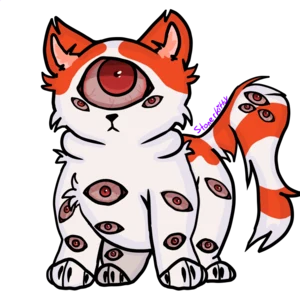



















 (elderly man has a heart attack while making sex)
(elderly man has a heart attack while making sex)






















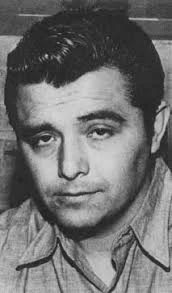
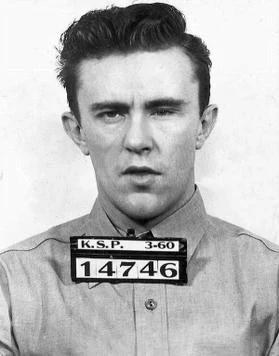







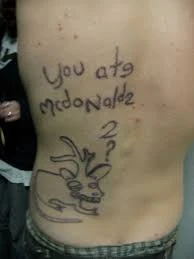





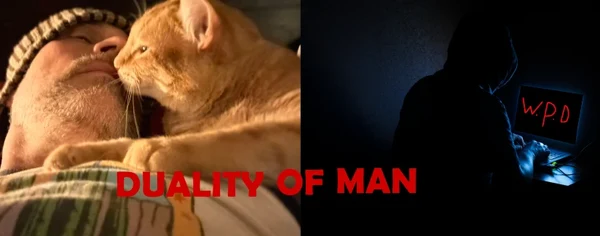

 Slavshit
Slavshit

 Sandshit
Sandshit
